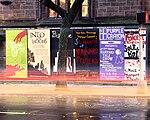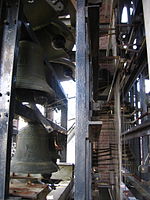Davenport College
Residential colleges of Yale UniversityUniversity and college dormitories in the United StatesUse mdy dates from February 2022
Davenport College (colloquially referred to as D'port) is one of the fourteen residential colleges of Yale University. Its buildings were completed in 1933 mainly in the Georgian style but with a gothic façade along York Street. The college was named for John Davenport, who founded Yale's home city of New Haven, Connecticut. An extensive renovation of the college's buildings occurred during the 2004–2005 academic year as part of Yale's comprehensive building renovation project. Davenport College has an unofficial rivalry with adjoining Pierson College.
Excerpt from the Wikipedia article Davenport College (License: CC BY-SA 3.0, Authors).Davenport College
York Street, New Haven
Geographical coordinates (GPS) Address External links Nearby Places Show on map
Geographical coordinates (GPS)
| Latitude | Longitude |
|---|---|
| N 41.31037 ° | E -72.93094 ° |
Address
Davenport College
York Street 248
06520 New Haven
Connecticut, United States
Open on Google Maps





